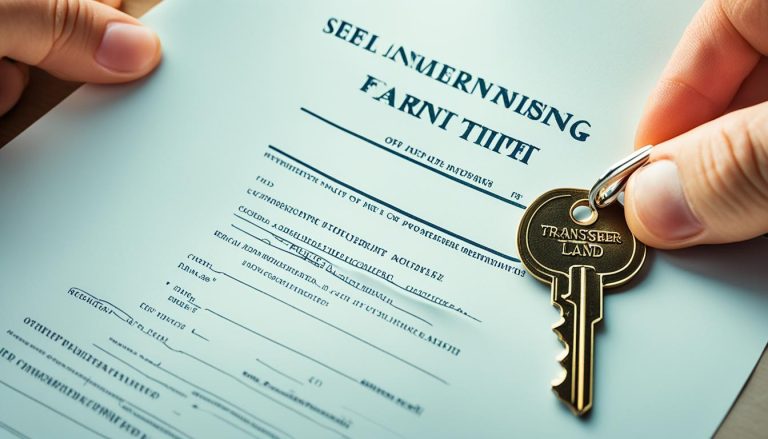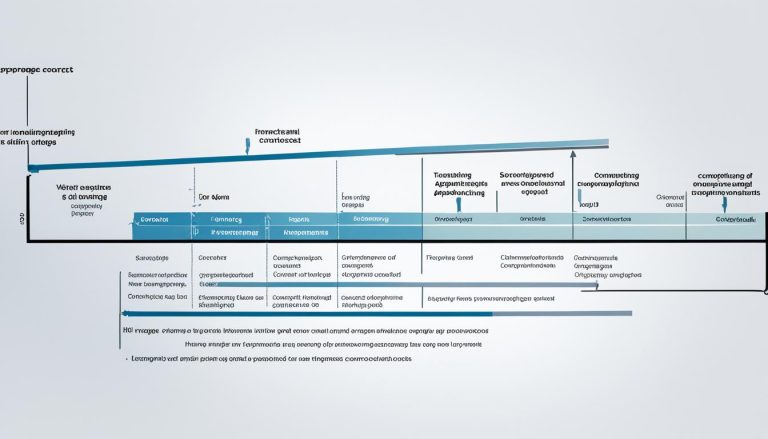Did you know that the UK’s land registration system covers over 85% of the country’s total land area? That’s an impressive statistic that highlights the sheer scale and importance of HM Land Registry, the government department responsible for maintaining the official records of land ownership and property boundaries in England and Wales. At the heart of this comprehensive system are the HM Land Registry title plans – the authoritative, legally-binding documents that precisely define the boundaries of registered properties and land.
These official title plans can now be easily obtained online, providing homeowners, conveyancers, and other interested parties with direct access to detailed information about a property’s legal ownership and tenure. This article will guide you through the process of requesting and obtaining official copies of HM Land Registry title plans, ensuring you have the essential resources to understand the legal status of a residential or commercial property.
What are HM Land Registry Title Plans?
HM Land Registry title plans are the official, legally-binding documents that provide authoritative details about the precise boundaries of registered properties and land across England and Wales. These plans are a crucial component of the national land registration system, as they outline the exact dimensions and limits of a registered title. The authoritative boundary details contained within these plans are an essential resource for homeowners, conveyancers, and other interested parties seeking to understand the physical extent of a property.
In addition to the boundary information, HM Land Registry title plans also contain details about the registered land ownership and the legal land tenure information of the property, such as whether it is registered as freehold or leasehold. These official plans serve as the definitive record of a property’s legal status and boundaries, making them an indispensable tool for navigating the complexities of cadastral mapping and conveyancing documents.
By providing access to this comprehensive land registration data and property tenure information, HM Land Registry title plans ensure that all stakeholders have access to the most up-to-date and authoritative details about a registered property’s legal ownership and boundaries.

Obtaining Official Copies of Title Plans
Obtaining official copies of HM Land Registry title plans is a straightforward process that can be completed conveniently online through the HM Land Registry portal.
Customers can search for a specific property by entering the title number (if known) or by providing the property details, and then select the option to “Order official copy of register, title plan and/or documents.” This will allow users to request a copy of the official title plan, as well as the title register, which contains additional information about the registered land ownership and tenure.
The HM Land Registry portal provides a user-friendly and efficient way for individuals to access these official land registry practice guides and official property records digitally, ensuring they have access to the definitive official land registry searches and order official copy of register for the property in question.
Additional Documents Available
Alongside the title plan and register, HM Land Registry offers a variety of other official documents that homeowners, conveyancers, and other interested parties can request. One of these important documents is the Certificate of Inspection of Title, also known as Form CI. This certificate verifies that a specific piece of land is registered under a stated title number and identifies the relevant colour references on the official title plan.
In addition to the Certificate of Inspection of Title, customers can also request official copies of various conveyancing documents, such as contracts for sale, mortgages, and leases, which may be associated with the registered title. These supplementary documents can provide valuable insights into the property’s history and legal status, complementing the information found in the title plan and register.
Certificate of Inspection of Title (Form CI)
The Certificate of Inspection of Title, or Form CI, serves as a verification that a particular piece of land is registered under a specific title number. This official document from HM Land Registry also identifies the relevant colour references on the title plan, making it a crucial resource for understanding the legal boundaries and ownership of a property.
Official Copies of Conveyancing Documents
Customers can request official copies of conveyancing documents related to a registered title, including contracts for sale, mortgages, and leases. These documents can offer additional details about the property’s history, transactions, and legal status, providing a more comprehensive understanding of the land and its ownership.

Fees for Official Copies
When requesting official copies of HM Land Registry title plans, registers, and other associated documents, customers should be aware of the applicable fees. The current fee for an official copy of a register or title plan is £3, while the fee for a Certificate of Inspection of Title (Form CI) is £7. These fees must be paid before the requested documents can be delivered to the customer.
Customers should factor in these fees for official copies when making their requests through the HM Land Registry portal. Paying the appropriate amount ensures the timely processing and delivery of the legally-binding records related to a property’s ownership and boundary details.

Viewing and Downloading Official Copies
Once a request for official copies of HM Land Registry documents has been submitted and processed, customers can conveniently access and download the digital files through the HM Land Registry portal. The PDF Downloads area within the portal provides a user-friendly way for individuals to view and save the official copies of the title plan, register, and any other requested documents.
In cases where a document cannot be delivered electronically, such as if it exceeds the file size limit, the HM Land Registry will arrange for the documents to be sent by postal delivery at no additional cost to the customer. This ensures that all individuals, regardless of their technical capabilities or access to the internet, can obtain the official copies of the HM Land Registry title plans and associated documents they require.

Alternatives to Original Title Deeds
While original title deeds were once the primary means of establishing property ownership, the introduction of the land registration system in England and Wales has made the HM Land Registry title register the definitive record of legal land ownership. HM Land Registry no longer stores the original paper title deeds, but they do maintain scanned copies of deeds that were filed when the property was first registered.
Scanned Copies of Deeds
If a property is already registered, the title register is the authoritative document that should be consulted, rather than relying on the original title deeds, which may have been lost or are no longer up-to-date. The scanned copies of deeds maintained by HM Land Registry can provide additional historical information about the property, but the title register remains the definitive record of a property’s legal ownership and tenure status.
Title Register as Definitive Record
In the modern land registration system, the title register has become the primary source of truth for a property’s legal status. Homeowners, conveyancers, and other interested parties should refer to the title register as the authoritative document when conducting research or verifying the details of a registered property, rather than relying solely on the original title deeds.

Conclusion
HM Land Registry title plans are the official, legally-binding documents that provide authoritative details about the precise boundaries of registered properties and land in England and Wales. These plans, along with the associated title register, are the definitive records of a property’s legal ownership and tenure status. Obtaining official copies of HM Land Registry title plans is a straightforward process that can be completed online through the HM Land Registry portal, allowing homeowners, conveyancers, and other interested parties to access this crucial information.
By understanding the importance of HM Land Registry title plans and the process for obtaining them, individuals can ensure they have access to the most accurate and up-to-date information about a property’s legal status and boundaries. This knowledge can prove invaluable when making informed decisions about property ownership, conveyancing, or other real estate-related matters within the United Kingdom.
The seamless integration of HM Land Registry’s online services makes it easier than ever for UK residents to obtain the official documents they need, ensuring they have the necessary information to protect their property rights and make well-informed decisions. As the definitive source of land registration data, HM Land Registry title plans remain an essential resource for anyone with an interest in the legal status of a registered property or land in England and Wales.
FAQ
How can I obtain official copies of HM Land Registry title plans?
You can request official copies of HM Land Registry title plans through the HM Land Registry portal. This allows you to order the official register and title plan for a specific property.
What other documents can I obtain from HM Land Registry?
In addition to title plans, you can also request official copies of the Certificate of Inspection of Title (Form CI) and various conveyancing documents associated with the registered title.
What fees are involved in obtaining official HM Land Registry documents?
HM Land Registry charges a fee of £3 for an official copy of a register or title plan, and £7 for a Certificate of Inspection of Title (Form CI).
What information do HM Land Registry title plans provide?
HM Land Registry title plans offer authoritative details about the precise boundaries of registered properties and land, as well as information about the property’s tenure status and other key data related to the land registration process.
How do HM Land Registry title plans differ from original title deeds?
While original title deeds were once the primary means of establishing property ownership, the title register maintained by HM Land Registry is now the definitive record of legal land ownership. HM Land Registry no longer stores the original paper title deeds.






